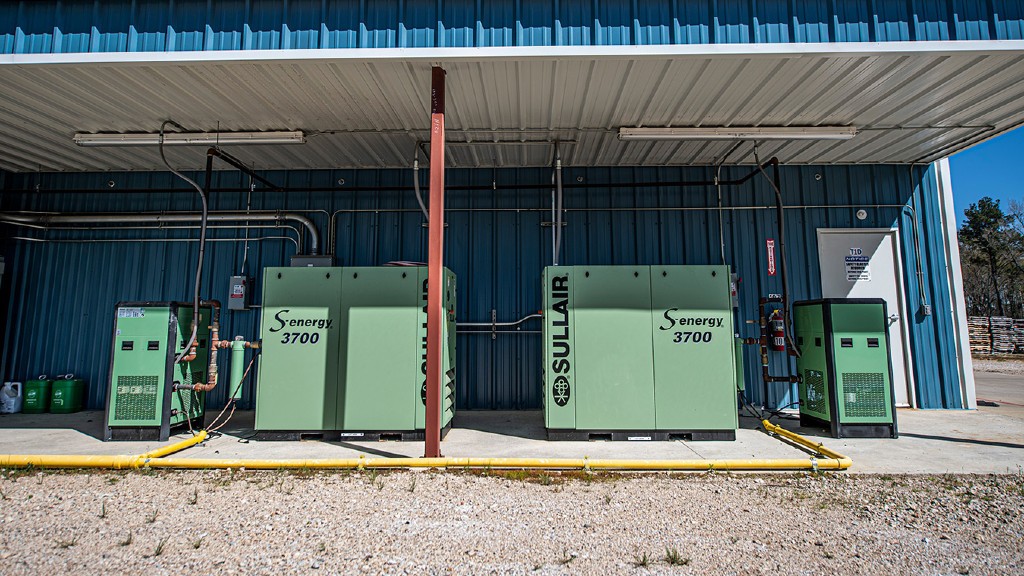
Hitachi Global Air Power, formerly Sullair, has released a climate action performance update for the fiscal year of 2022. In the update, the company says that it achieved carbon neutrality throughout its global operations as part of its long-term climate action strategy.
This strategy comes in line with Hitachi's environmental targets, titled "Hitachi Environmental Innovation 2050". The Hitachi Group has set a target of becoming carbon neutral in all its global factories and offices by 2030 and achieving carbon neutrality throughout its entire value chain by 2050. The Hitachi Global Air Power Michigan City campus achieved carbon-neutral status in fiscal 2021 and globally in fiscal 2022.
"We want to be an industry leader in how to sustainably build real-world compressed air and service solutions," said Hitachi Global Air Power President and CEO, John Randall. "Operating sustainably is not only the right thing to do but more and more it is becoming an expectation of our customers. To truly be a leader in this area, we are evolving our culture to think and act differently and we're making significant investments in our people and facilities to get there."
To achieve the ongoing targets, the company added a dedicated, cross-functional sustainability team led by Luis Torres, vice president of global sustainability. Torres has added oversight over all Hitachi Industrial Equipment Systems sustainability efforts to drive alignment and facilitate change. The team is charged with establishing sustainable business practices and with installing a sustainability mindset throughout the company's culture. This includes ensuring product development teams are designing compressed air solutions that are both durable and able to be remanufactured for a second and third life.
Torres and his team manage the company's active whole good remanufacturing program, which disassembles, recycles, reuses, and re-manufactures air compressors. The company says that the program has helped offset more than 5,000 metric tons of CO2 production through the salvage and reclamation of components.
"We are accelerating our sustainability efforts and doing so in a way that keeps the customer front of mind," said Torres. "We have a lofty goal – to be carbon neutral throughout our value chain by 2050. We can't accomplish that by thinking small. The products we manufacture, the way we manufacture, and how we go to market all need to be focused on our customer – and the preservation of our planet. We are making great progress and our business is better for it."
The E1035H electric portable air compressor is an example of the company's more sustainable approach to design. The E1035H was engineered to provide the same power and performance as its diesel counterparts but with zero emissions. Intended for the construction and rental markets, including for use as backup plant air.
Highlights of Hitachi Global Air's 2022 long-term climate actions
On-going Capital Expenditure Improvement Projects
United States - Michigan City, Ind.
- Upgraded the HVAC system which resulted in a reduction of 548 metric tons of CO2 emissions.
- Nearly 1,100 fluorescent lights were upgraded to high-efficiency LED lighting, resulting in a reduction of 317 metric tons of CO2 emissions.
- Installed 80 pace node devices to monitor energy usage on each piece of equipment resulting in a reduction of 479 metric tons of CO2 emissions.
Australia
- Added PV (solar) panels in Dandenong South (Melbourne, Victoria), Paget, (Mackay, Queensland), and Berrinba, (Brisbane, Queensland) branches resulting in an estimated 45 metric tons reduction of CO2 emissions.
China
- Added solar panels at the manufacturing facility which resulted in an estimated 647 metric ton reduction of CO2 emissions.
Voluntary green power
In the United States, Hitachi Global Air Power transitioned to 100 percent renewable electricity through the purchase of renewable energy certificates (REC) for all U.S. locations. Through the REC program, certificates purchased allow Hitachi Global Air Power to designate a portion of its monthly electric usage to come from power generated by hydroelectric sources.
In China, Hitachi Global Air Power transitioned to 100 percent renewable electricity through the purchase of the International Renewable Energy Certificate (I-REC). Through the I-REC program, certificates purchased allow Hitachi Global Air Power to designate a portion of its monthly electric usage to come from power generated by hydroelectric sources.
In Australia, Hitachi Global Air Power transitioned to 100 percent renewable electricity through a voluntary green power program at all facilities which purchases RECs on the company's behalf and allows Hitachi Global Air Power to designate a portion of its monthly electric usage to come from power generated by renewable energy sources.
Voluntary carbon offset program
A voluntary carbon offset program allowed Hitachi Global Air Power to offset CO2 emissions while developing and implementing future additional measures for fossil fuel use reduction over the next three years.



